How to Get Rid of Black Bugs on Tomato Plants
I’m sharing how to get rid of black bugs on tomato plants. There are several organic methods of pest control that are fast, effective, and simple. The key point to remember is that no pesticides should be in your garden.

Isn’t it just the worst to start tomato seeds indoors, care for the seedlings and watch them grow, and plant them outdoors only to find small black bugs on them before too long? The leaves were perfect and healthy but then you find them looking more like lace than leaves.
How to Get Rid of Black Bugs on Tomato Plants
There are a number of effective ways to decrease garden pests that damage your plants. But one thing you don’t want to do is use harmful chemicals where you grow food that you plan on eating.
The complete list of organic options and organic options of last resort are at the bottom of this post.
Here is a brief list of organic options.
- Don’t use pesticide sprays or dusts.
- Keep plants healthy.
- Plant disease-resistant varieties.
- Use companion planting to deter pests.
- Practice crop rotation.
- Plant flowers to encourage natural predators and deter tomato pests.
- Weed in and around your garden.
- Spray pests off your tomato plants with water.
- Cover tomato plants with floating row covers.
- Make sure tomatoes are pruned and trellised to have maximum airflow and sunshine.
- Water tomato plants at the root level and try not to get the leaves wet.
Here is a brief list of organic options of last resort.
- Spray tomato plants with insecticidal soap.
- Sprinkle food-grade or garden-grade diatomaceous earth on tomato plants.
- Spray tomato plants with horticultural oil.
- Spray neem oil on your infected plants.
- Use sticky traps near infected plants.
What are the little black bugs on my tomato plants?
The tiny insects on the leaves and stems of your tomato plants are black aphids or flea beetles, or both. Both of them feast on the leaves of tomato plants and other garden plants. That’s why you want to get rid of these tiny black bugs from off your tomato plants!
The National Garden Association has a very useful Pest Control Library that has a photo index (“Bug Mug”) of all garden insects. It includes descriptions of their specific threats to vegetable plants, and organic techniques for combating them.
Aphids are a common pest for tomato plants.
Aphids are tiny bugs that are small, pear-shaped, soft-bodied insects that plague gardens. They come in various colors including black, green, pink, and grey, that reproduce several generations within a single growing season. If you have an infestation, you want to get rid of these black bugs from off your tomato plants.
Aphids feed on the undersides of leaves by sucking the sap out and exuding a sweet, nutrient-rich, sticky substance called honeydew. Sometimes, sooty mold can grow on the honeydew and the black spots will grow and eventually turn the leaves black, which blocks out sunlight.

If aphids are plaguing your tomatoes, the leaves will look crinkled and distorted. Aphids can also spread mosaic virus which is incurable but probably won’t affect your tomato crop yield. Mosaic virus makes the leaves mottled with yellow spots and white spots.
Aphids generally show up in early spring and typically don’t do much damage to your crop. The good news is that beneficial insects will come to eat them just a few weeks later. A few aphids aren’t a problem. But if it looks like your plants may die from an aphid infestation, it’s best to get rid of them.
Flea beetles are a common pest for tomato plants.
Adult flea beetles are small insects that are tiny, round or elongated, blue to black beetles that earned their name because they jump like fleas when they are disturbed.

If flea beetles are plaguing your tomatoes, the leaves will have many small holes and look like lace before long.
Adult flea beetles prefer hot, dry conditions and can spread diseases like early blight to potatoes or bacterial wilt to corn. Flea beetle larvae feed on the roots of many plants and the adults overwinter in the soil and emerge hungry in early spring.
How You Get Rid of Black Bugs on Tomato Plants Matters
There are a number of effective ways to decrease garden pests that damage your plants. But one thing you don’t want to do is use harmful chemicals where you grow food that you plan on eating. If you see pests and want to get rid of black bugs from off your tomato plants, do your research first and pick the best option that you feel comfortable with.
Choose organic pest control for your vegetable garden.
Plant roots absorb everything in the soil. Many pesticide chemicals are soluble in water and that water seeps down into the soil.
When plant roots absorb pesticide-laced water, the toxic chemicals are transferred into every part of the plant including the fruit and vegetable.

A scientific study of pesticide found inside tomatoes and lettuces.
As alarming as it is, I think it’s important to report what I found when I started digging.
I went to the United States NIH (National Institutes of Health) website to the National Library of Medicine to find these free publications. The scientific journal Molecules by MDPI (Multidisciplinary Digital Publishing Institute), published research in January 2020 that documented the findings from a 2018 sample study in Chile. Here are the key takeaways:
“Over the last years, the detection of pesticide residues in the official food surveillance programs of Chile has been increased, mainly in fresh vegetables such as tomatoes and lettuces.”
Note that they said “in” fresh vegetables and not “on” fresh vegetables.
“The findings of this study reveal that tomatoes and lettuces cultivated in the [Metropolitana Region] show more than 50% of samples with one or multiple pesticides residues.”
“The main pesticides detected in tomatoes and lettuces were methamidophos, methomyl, difenoconazole, cyprodinil and boscalid.”
“Methamidophos…is hydrophilic with a high water solubility often transported to vegetables. This insecticide can be transferred to plants from the cultivation medium through root uptake and translocation, and its associated risk is higher for fresh vegetables that may be consumed raw.”
To put it simply, this particular pesticide mixes very well with water and soaks into the soil. The roots absorb the pesticide-laced water and send that water all through the plant, including to the vegetables.
“Many studies have demonstrated the acute toxic effects of methamidophos by inhibiting acetylcholinesterase and thus be hazardous to human health.”
The study goes on to say that the other pesticides found are also very toxic to humans.
Why should I care?
Why should you care? Let me point out some things.
- Chemicals designed to kill will seep down into soil. When that happens, water-soluble poisons are absorbed by roots and “translocated” into the edible fruit and vegetables. When we eat those fruits and vegetables, we are ingesting those toxic poisons.
- Toxic poison kills harmful pests but also beneficial lifeforms. Many beneficial insects fight against harmful pests! And we need some of these to grow healthy plants.
- The harmful pesticides found in Chilean tomatoes and lettuces are not banned by the United States EPA (Environmental Protection Agency). At the present time, they are “Restricted Use Pesticides” at most, and just a handful of states have begun phasing them out or banning them.
So no matter which country you live in, all water-soluble pesticides end up in the food you eat unless you are eating food grown without harmful pesticides.
What EPA says about pesticide use on food.
To be fair, this is the Environmental Protection Agency stance on using pesticide on food crops.
“Under the Food Quality Protection Act (FQPA), EPA must ensure that all pesticides used on food in the United States meet FQPA’s stringent safety standard. FQPA requires an explicit determination that a pesticide’s use on food is safe for children and includes an additional safety factor, tenfold unless data show a different factor to be protective, to account for uncertainty in data relative to children.”
“The science and our understanding of chemical risk evolves and EPA continues to reevaluate each pesticide’s safety every 15 years. EPA’s continuous reevaluation of registered pesticides, combined with strict FQPA standards, major improvements in science, and an increase in the use of safer, less toxic pesticides, has led to an overall trend of reduced risk from pesticides.”
My opinion is this. There are no “safe” levels of “less toxic” pesticides in my food. Also, reviewing pesticides once every 15 years doesn’t sound frequent enough if it’s reviewing something known to be toxic that is sprayed on our food and found inside our food.
In short, I wouldn’t brag about this if I were EPA.
Please do your own research and use your judgment. My opinion on food safety is just that; it’s my opinion.
Options to Get Rid of Black Bugs on Tomato Plants
Organic options for pest control.
This list is ordered from least expensive, or things that should be done anyway, to most expensive and methods of last resort.
1. Don’t use pesticide sprays or dusts.
The first and by far BEST way to decrease bad bugs is to never use toxic pesticide sprays or dusts. In a balanced organic garden, beneficial insects will come to eat them.
After that, there are several things you can do to repel and kill garden pests.
The worst thing you can do to get rid of garden pests is to nuke them with pesticides. This throws the garden balance off and kills both beneficial and harmful insects.
Most often the harmful insects will come back stronger. Without the beneficial insects to stop them, the harmful insects will thrive and destroy your garden.
2. Keep plants healthy.
Most garden pests prefer sick and stressed plants. I think it might have something to do with the plant hormones (phytohormones) that sick and stressed plants give off, which alert nearby plants to be on guard for certain things.
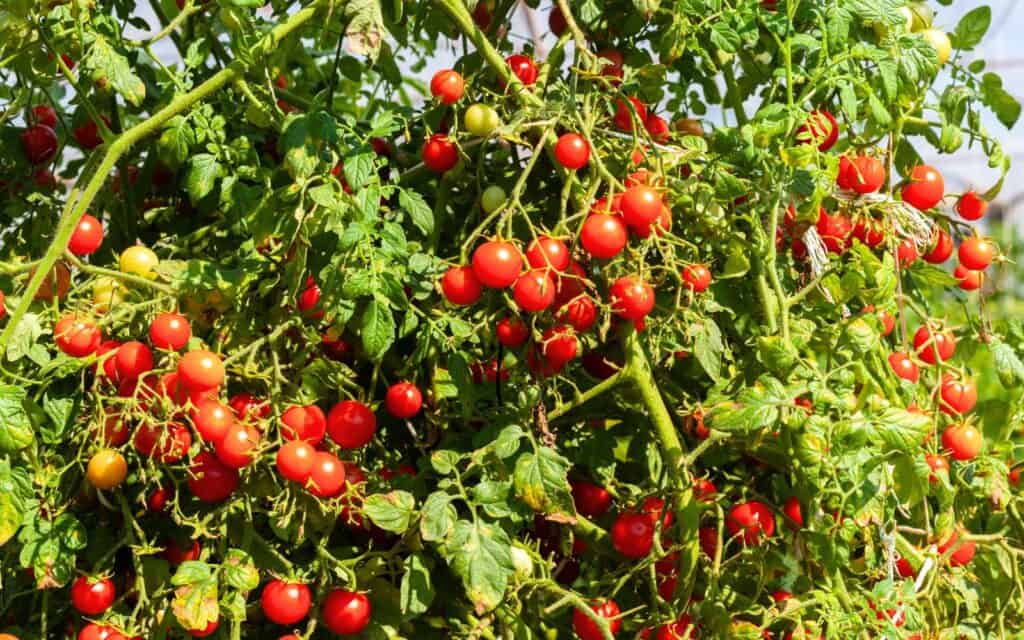
Start your plants off right and give them everything they need to thrive. Plant seeds at the right time or start them off indoors where they will be protected.
I wrote a whole post on the benefits of using worm castings when you start your seeds indoors. This gives your seedlings everything they need to grow and thrive before you plant them outside.
It’s also important that your soil is healthy and has the right pH for your garden plants to absorb nutrients. I wrote another post on laboratory soil testing and included resources for home gardeners explaining the best pH for gardens and everything you need to know about taking a soil sample and testing that sample.
Healthy plants depend on healthy soil. Make sure your soil is healthy so you don’t stress out your plants and invite troublesome pests.
Sunlight is also important for tomato plants to grow healthy. So space them out properly and make sure they get all the sunshine they need.
3. Plant disease-resistant varieties.
This goes hand-in-hand with keeping plants healthy. If you can prevent plant stress by planting disease-resistant varieties, do it.
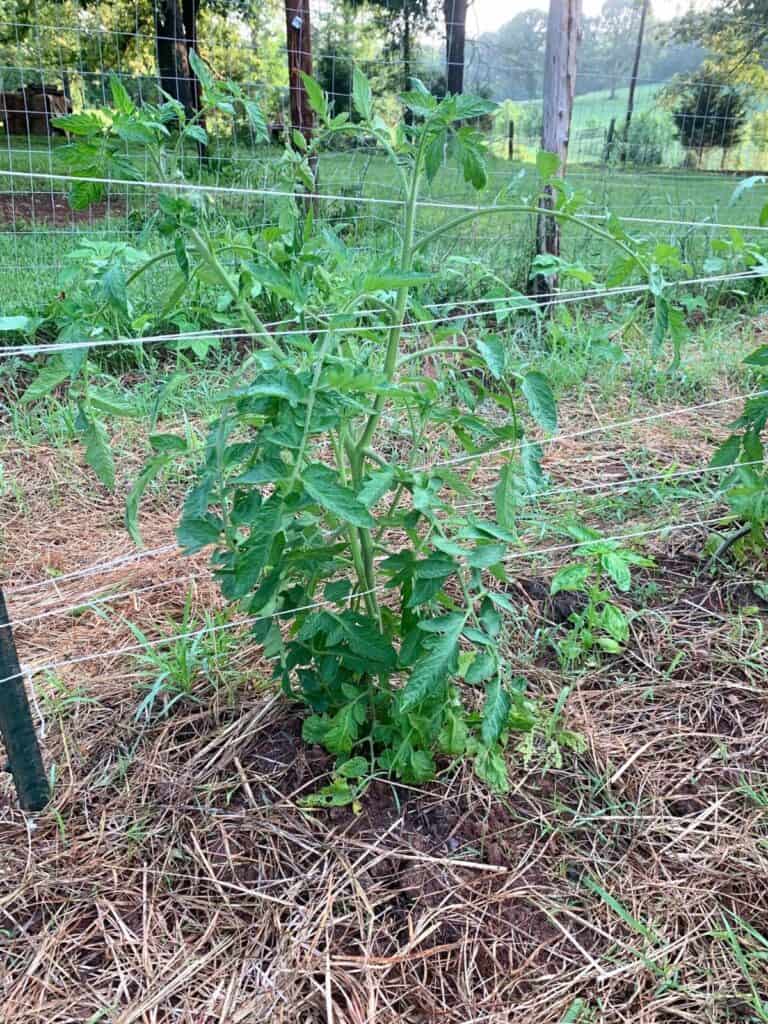
There are many disease-resistant tomato varieties. Your local county extension office should have a list of the best varieties to grow in your area.
You could also start saving your garden seeds from one season to the next. Tomatoes are great for beginner seed-savers. They don’t cross-pollinate and it’s a simple process to save their seeds.
When you save seeds from your best tomato plants from year to year, you breed strong and desirable traits for your specific area and pest problem. Plus you won’t have to buy seeds ever again!
To do this, plant several of each tomato variety in your garden and tag the healthiest plants from each type to save seeds from. At the end of the season, allow at least one of the tomatoes from each plant to fully ripen. This allows the seeds inside to also fully mature.
One tomato will generally have more than enough seeds for the avid home gardener to use the following year. Small cherry tomatoes could have up to 60 seeds and larger beefsteak tomatoes could have over 300!
There are two ways to save tomato seeds.
First, you can slice the tomatoes open, scoop out the seeds, and wash and dry them thoroughly before storing them in paper, glass, or plastic containers.
Second, you can slice the tomatoes thinly and bury those slices (with all the gooey seeds) in a seed tray or pot with some dry seed starting soil, and keep it in a cool, dark place until the following spring. In spring, pull out your seed tray or pot, water it well, and put it in a sunny window or under lights to watch your new seedlings start to grow! You’ll have to re-pot the seedlings, of course.
4. Use companion planting to deter pests.
Many garden pests that love eating on some garden plants are deterred by other garden plants.

In particular, anything in the allium family (onions, leeks, shallots, chives, garlic) seems to protect vegetables from pests. They’re almost like a force field. Plus, they’re a crop all by themselves!
Nasturtiums also deter the aphid population and flea beetles, plus you can eat the leaves and flowers.
It’s a good idea to plant vegetables among and close to companion plants like herbs, other vegetables, and flowers. This confuses garden bugs and keeps them to a manageable population. Don’t grow a massive planting of just one vegetable.
5. Practice crop rotation.
Crop rotation is the practice of changing the location of crops from one year to the next. Diseases and insect larvae that affect a crop during the growing season will lay dormant in the soil through the fall and winter.
If you grow the same crop they loved in the same spot where they wake up from in spring, you can guarantee a worse pest problem than the previous year.
The longer you can wait to repeat a crop in a particular spot, the better off you’ll be. Wait at least one year if you can, but most crop rotation cycles encourage a four-year cycle. Companion planting does help the situation, though.
6. Plant flowers to encourage natural predators and deter tomato pests.
Lacewings eat aphids and flea beetles. Lady beetles (adults and larvae) eat aphids and other garden pests. Predatory insects like parasitic wasps are natural enemies of aphids. They devour them. Not every garden bug is wreaking havoc on your tomatoes and some even protect them.

Plant colorful flowers to attract beneficial predators into your garden and they’ll stick around when they see that there is plenty to eat. I found this adolescent ladybug (Lady beetles) on one of my sunflowers, no doubt hunting aphids in the garden.
I’ve already mentioned nasturtiums but marigolds are another popular flower that deters garden pests. I also like to grow herbs and colorful zinnias to attract beneficial predators and birds into the garden that will eat the bugs.
7. Weed in and around your garden.
Not only do weeds use up the water and nutrients in your garden soil, but they also harbor garden bugs (both good and bad alike). Take away their habitat by keeping your garden weeded and mulched. And make sure you cut the nearby lawn short.
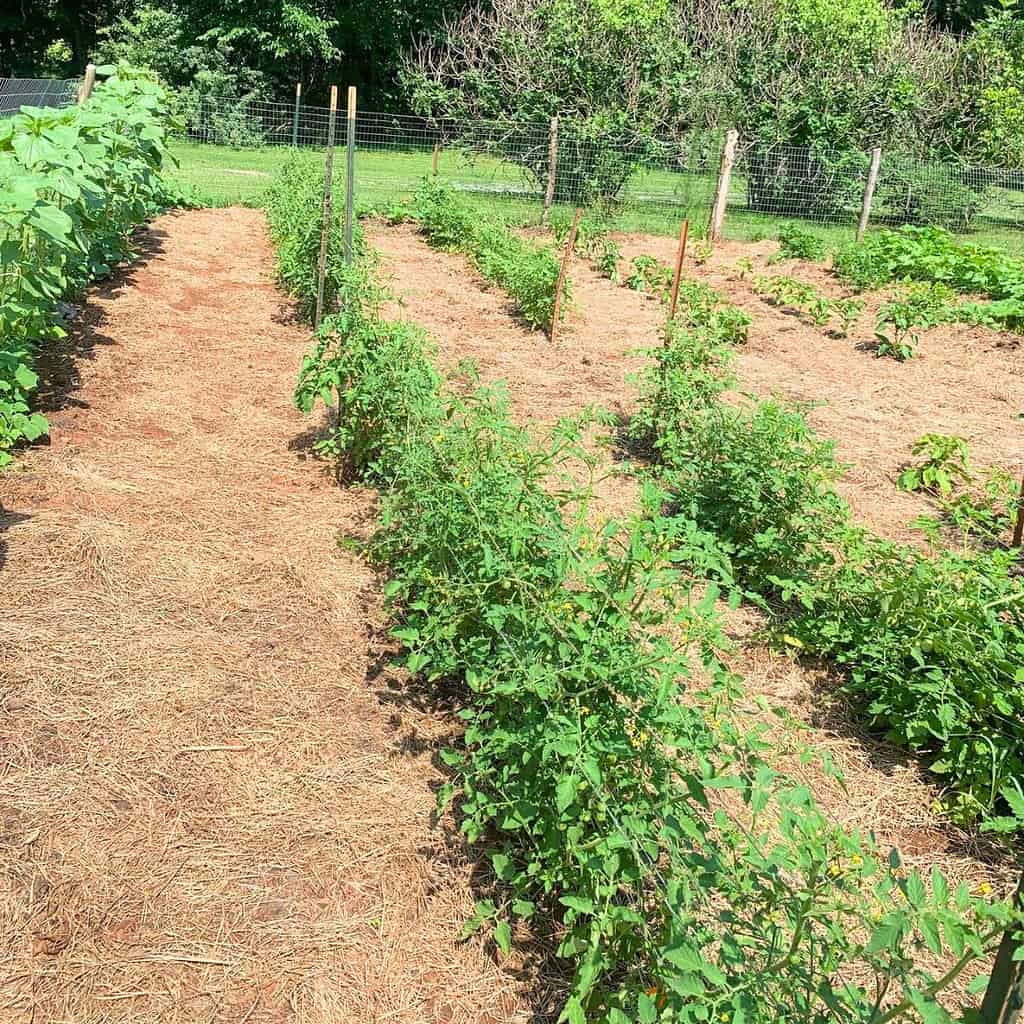
Garden pests are less likely to thrive in a neat and tidy garden that is well-maintained and weeded. Plants get more air and sunshine which reduces their stress, and aphids and flea beetles have nowhere to hide when the beneficials come looking for a meal.
8. Spray pests off your tomato plants with water.
If beneficial insects are not present in your garden yet, spray a strong squirt of water on your affected plants including the underside of leaves. The aphids will drown and it will displace the flea beetles.
9. Cover tomato plants with floating row covers.
The small-scale home gardener can use row covers to protect young plants from garden pests until they’re big enough to fight them off and survive on their own.
Keep your tomatoes covered up until late spring when beneficial insects are more prevalent, or even keep them covered all the time in a hoop house or other type of greenhouse…assuming aphids and flea beetles aren’t a problem in there, also.
10. Make sure tomatoes are pruned and trellised to have maximum airflow and sunshine.
If aphids and flea beetles are plaguing your tomatoes, make sure your tomatoes are properly pruned and trellised to maximize airflow and sunshine.
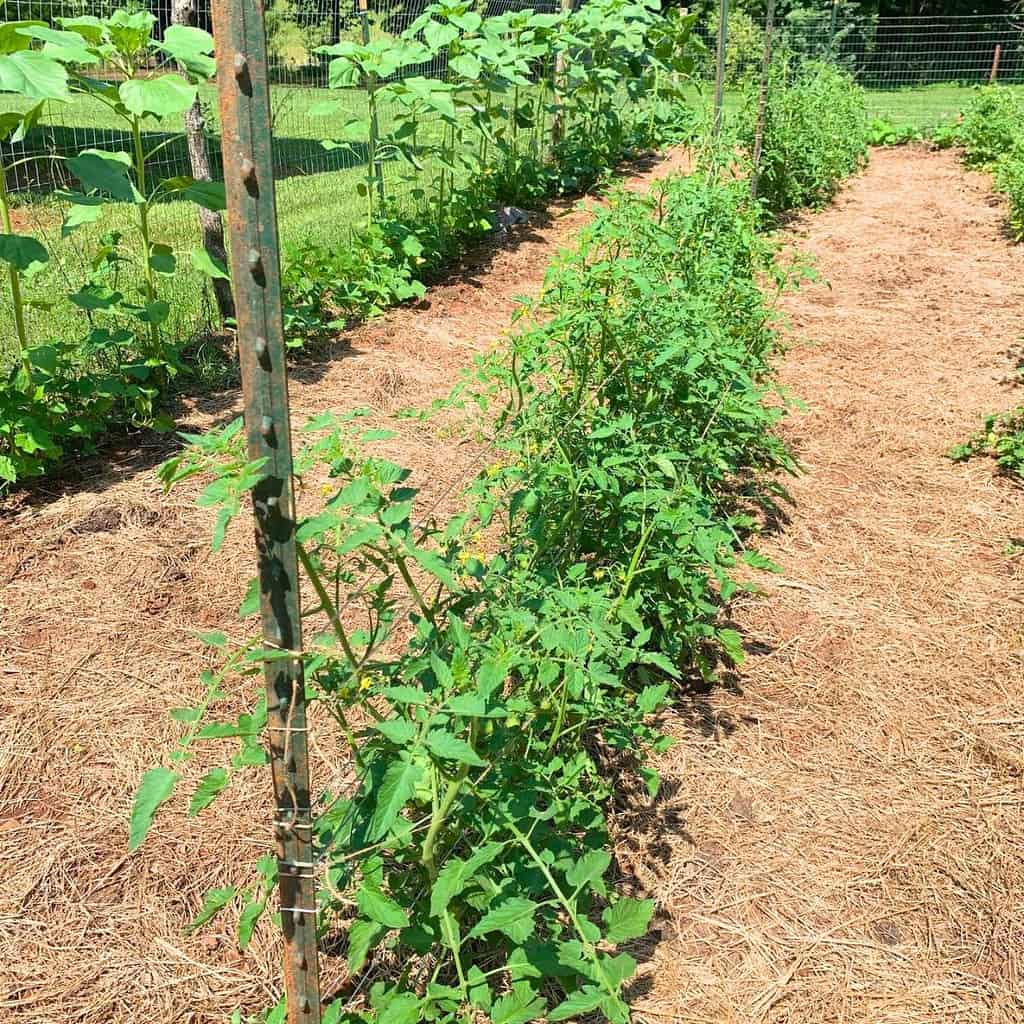
Tomato growth can get pretty wild if left unchecked. You should be checking your garden at least once per week to train up the new tomato growth and removing suckers that would grow too close to other stems.
I wrote a detailed post with step-by-step instructions on how to trellis your tomatoes using the Florida weave method. There are several ways to train your tomatoes, though. Just be sure you’re doing something so that your plants have maximum airflow and sunshine.
11. Water tomato plants at the root level and try not to get the leaves wet.
One of the common misconceptions about garden plants is that you need to get their leaves wet. I know I used to think that. But of course that’s a myth and it’s actually better to water garden plants at the roots without getting the leaves wet as much as possible.
In fact, using an overhead sprinkler in the evening is one of the worst things you can do for your garden. Doing that soaks the leaves and keeps them wet for the whole night which can cause blossoms on fruit-producing crops to rot and drop off before setting their fruit!
Additionally, moisture is a breeding ground for fungus, slugs, and snails.
Keep these watering tips in mind. Water in the morning so your plant leaves can dry out during the day and only water when your garden needs it. But water deeply to encourage roots to go deep into the ground.
Organic pest control options of last resort.
This section of organic pest control methods should be used as a last resort after the above recommendations are tried. A balanced ecosystem will keep garden pests in check and that’s preferred over these methods, which can cause harm to beneficial insects.
This post contains affiliate links. As an Amazon Associate I earn from qualifying purchases. That means I make a small commission at no cost to you if you place a qualifying purchase through any of the links. Read my full disclosure here. Thanks for your support!
1. Spray tomato plants with insecticidal soap.
If water from a water hose doesn’t solve your problem, you can kill garden pests by spraying them with insecticidal soap.
Most household soaps and detergents can burn plant leaves, so it’s best to buy commercially made insecticidal soap and dilute and apply according to package directions.
Keep in mind not to spray on windy days, since this is a contact pesticide. You don’t want the spray to kill nearby beneficial bugs. Also, you can add up to 10% alcohol in your sprayer to help the soap adhere to the pests.
2. Sprinkle food-grade or garden-grade diatomaceous earth on tomato plants.
Diatomaceous earth (DE) is the naturally occurring fossilized remains of phytoplankton called diatoms. They are microscopic with sharp edges that effectively cut into insects like aphids and flea beetles which kills them.
Unfortunately, DE also kills beneficial insects that you want in your garden. Plus it’s hazardous to breathe. If you use DE, be safe and wear a mask so you don’t get the dust into your lungs. Also, dust your plants in the late afternoons when beneficial bugs aren’t active.
3. Spray tomato plants with horticultural oil.
Horticultural oils are petroleum-based contact insecticides that smother insects and insect eggs. Dormant or heavy oil is sprayed during the winter or early spring months, and summer or lightweight oil is sprayed during warmer months. There are also oils you can use all year.
To avoid drift, don’t spray on windy days. Also, wear protective clothing like goggles, long sleeves, and gloves. Keep pets and children far away when you spray.
4. Spray neem oil on your infected plants.
Neem oil is made from the fruit kernels of the neem plant. It is a broad-spectrum miticide and insecticide that kills on contact. Just like horticultural oils, it kills insects by smothering them.
Be wary not to spray beneficial insects if you decide to try neem oil. Spray late in the day, when it’s not windy, and wear protective clothing.
5. Use sticky traps near infected plants.
Sticky traps can be effective at trapping unwanted garden pests like aphids, flea beetles, and spider mites. However, use them judiciously because they can trap beneficial insects, too.
How to Get Rid of Black Bugs on Tomato Plants: Let’s sum it up.
I just want to reiterate that just because you see garden bugs on your tomato plants, that doesn’t necessarily mean that your crop will suffer.
If you see aphids or flea beetles on your plants in early spring, try the least harmful methods of dealing with them first. If they continue to be a problem, work your way down the list I provided. In a few weeks, the beneficial insects will come to your rescue!
Always use insecticides or other methods that might possibly harm beneficial insects as a last resort.
Shop This Post!
Diatomaceous Earth, Food Grade (Bulk: Azure Standard, 50lb)
Food Grade Diatomaceous Earth, 10 LBS (Amazon)
Other Related Posts
Can you spray soapy water on tomato plants?
How to Control and Get Rid of Aphids on Pepper Plants
How to Trellis Tomatoes Using the Florida Weave
Laboratory Soil Testing and Resources for Gardeners
Here’s Why Chickens Can Eat Some Tomatoes
Pin It For Later!


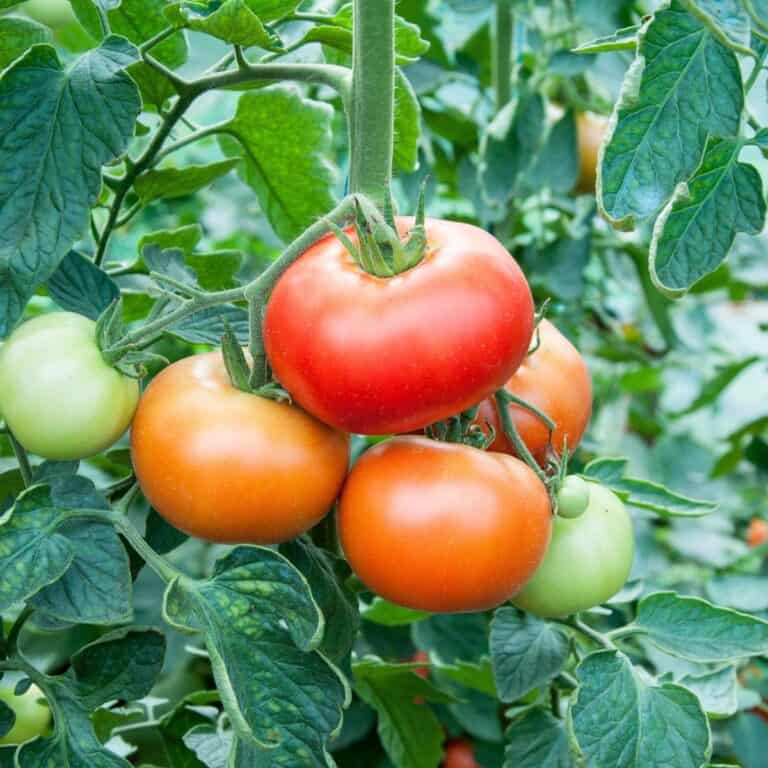
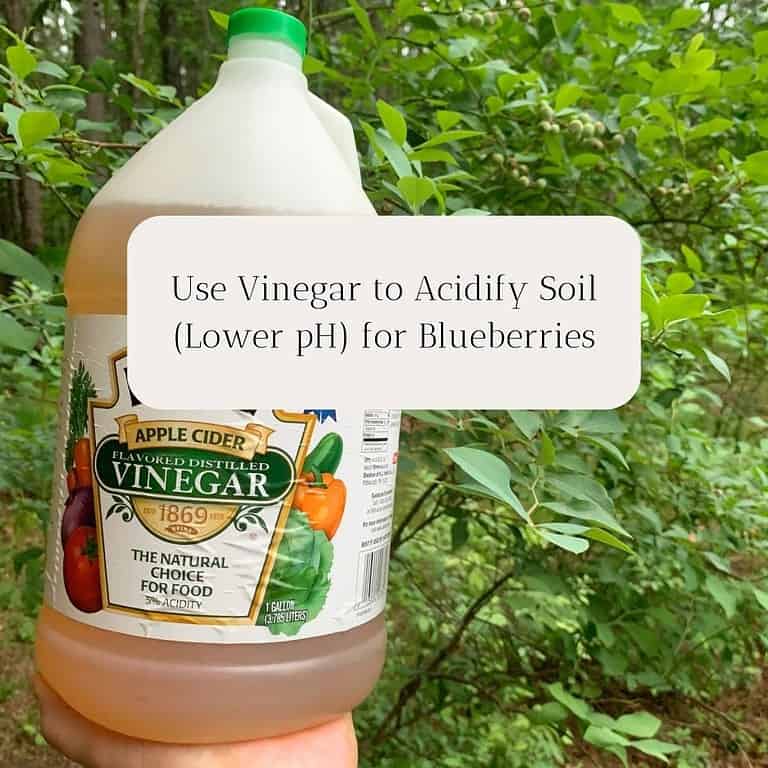

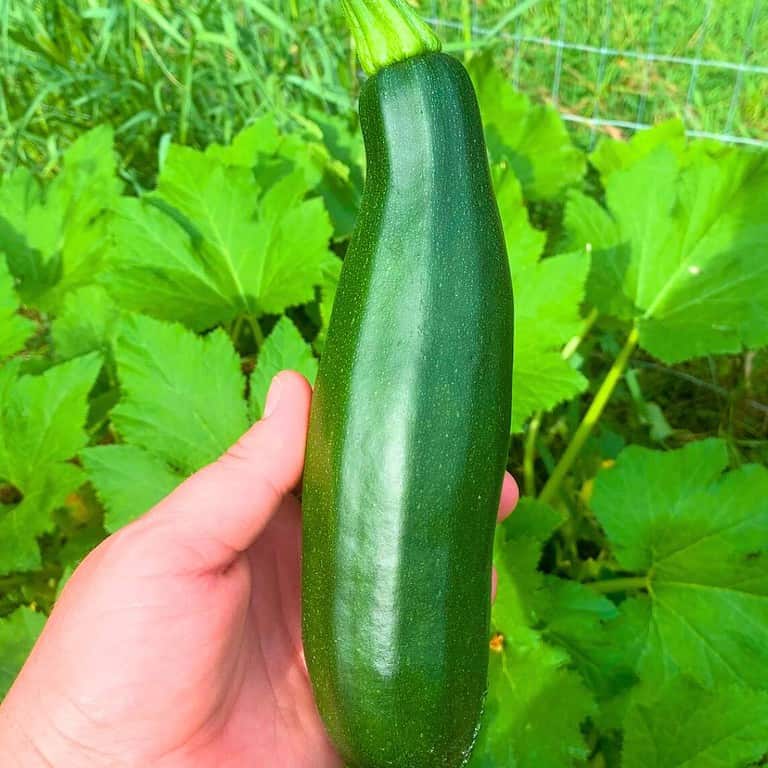
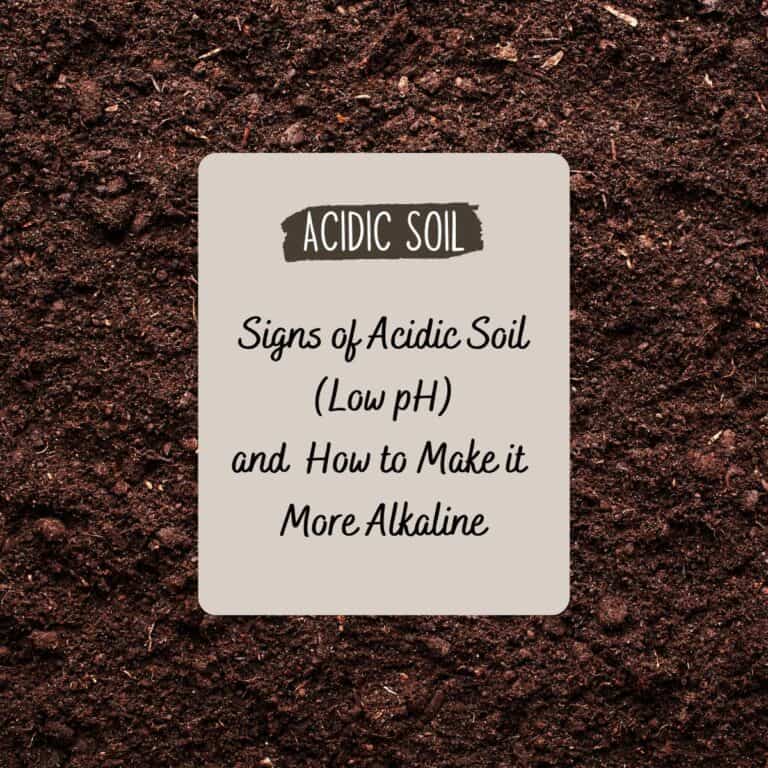
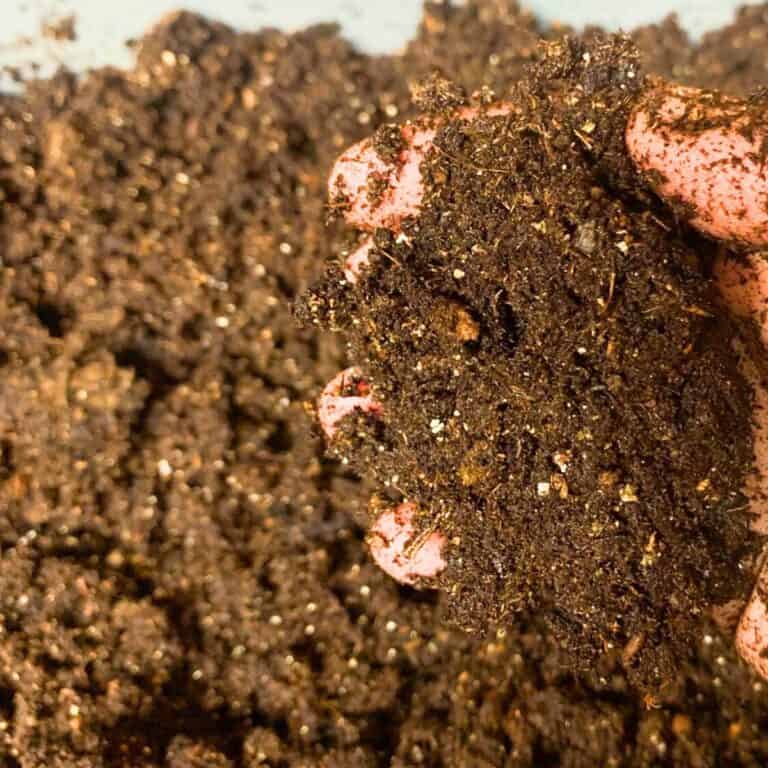
Such good tips to help! I definitely want to stay away from pesticides! I need to incorporate more flowers into my vegetable garden!
Yes, definitely stay away from pesticides if you can help it!
This is an incredible article! Thank you so much for sharing!
You’re very welcome!
Such a great post! Those bugs are so annoying. Thanks for sharing these helpful tips!
I agree. You’re welcome!